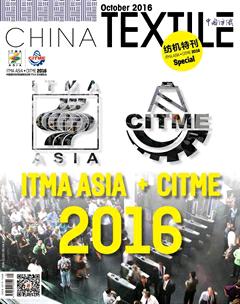China is giving tough competition to Europe
The Textile industry is witnessing a growth of 8-10 per cent. The size of Indias textile machinery industry is poised to double to Rs 45,000 crore in the next 7 years from the present Rs 22,000 crore in light of new projects and emphasis on setting up textile parks.
This industry is nearly sixty years old and has more than 1000 machinery and component manufacturing units. Nearly 300 units produce complete machinery and the remaining produces various textile machinery components. However, not all the units work to full capacity or even the optimum capacity level. Currently, our inhouse production is insufficient to meet domestic demand. Apart from the spinning sector other sector machineries such as weaving, knitting and wet-processing lack high level of quality standard and performance (in most of the cases) to compete with the European manufacturers. In the weaving sector, shuttleless weaving machinery (rapier or air jet) and in the knitting sector (circular knitting and flat knitting) machineries hardly have any presence in the industry.
The machinery manufacturing operation takes place at the organized and the unorganized sectors. In the organized sector, in addition to the public limited companies, machinery manufacturing is done in independent units, which have collaborative joint ventures with the foreign entities. In the decentralized sector, there are small-scale industrial units as well as tiny units engaged in the production of accessories. Around 87 per cent of the total production, i.e., textile machinery is coming from the six clusters namely Ahmedabad, Bangalore, Coimbatore, Ludhiana, Mumbai and Surat. These clusters are strategically located to serve the textile industry and have the affiliation to produce the kind of machinery required by the industry. Currently most of textile machinery is consumed within the country, so there is very less scope for the export.
Till few years back, Europe was considered a biggest manufacturer of textile machineries, but today China is giving tough competition. India is major import partner to China followed by countries like Bangladesh, Indonesia, Vietnam & Japan. Asia is biggest consumer of Chinese machineries. Chinas machinery Export is growing steadily & expected to reach USD3.07billion in Year 2016, whereas import is showing decreasing trend. The demand of Chinese machineries is growing multi folds, still there is lot of scope for improvement in terms quality & life of machinery.
The USP of Chinese machineries is its low cost. Though these machineries are exported across the globe, Asian countries are major import partners owing to its cheaper price & geographical advantage. India is the top import partner for Chinese Machineries. Indian imports are growing with CAGR of 10% estimated to reach USD 847 Million by 2016. India is majorly importing knitting machineries from China, followed by weaving machines.endprint

